80% of us experience low back pain during our lifetime (1). Performing repeated movements in a specific direction is a powerful technique to improve back pain, range of motion and function. This method is known as the McKenzie approach, or Mechanical Diagnosis and Therapy (MDT).
It’s among the best treatments for low back pain (2). Performing the right movement produces immediate pain and motion improvements.
I use this treatment approach daily in my physical therapy practice. And it produces substantial, immediate results for many patients. Just 10-15 repetitions can produce incredible changes in pain and motion.
It’s so powerful, patients have literally asked me if it’s magic.

Sounds too good to be true, right?
A Success Story
Bill* is a college football player. He describes mid-line low back pain that started 1 month ago after a heavy squat workout. Squats, deadlifts, sitting and driving aggravate his back. Pain and fear of re-injury prohibit him from lifting heavy at the gym. His low back feels the same, or even a little worse than it did a month ago.
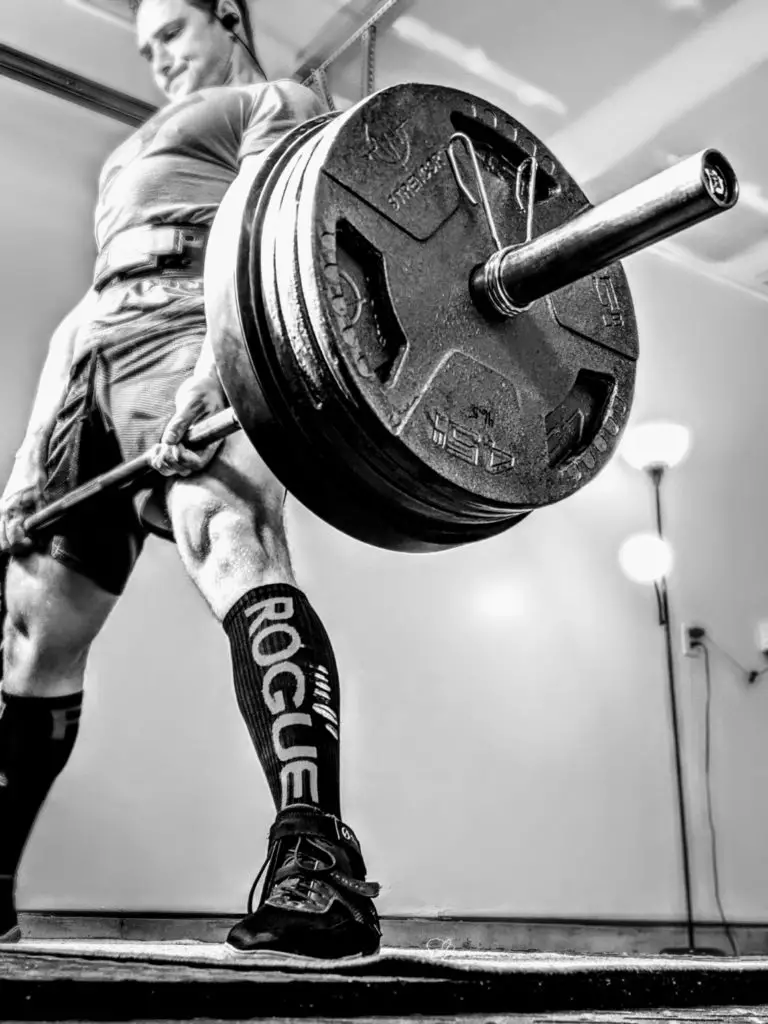
After a physical assessment, I ask him to perform 10 repeated extensions (described below). It works! After 10 reps, his low back pain and motion are 50% better.
If repeated movements are performed in the right direction, immediate improvements occur. As instructed, Bill does repeated extensions at home. He knocks out 4 sets of 10 repetitions every day.
When Bill returns a week later, he’s felt zero pain the last 3 days! With his pain eradicated, we shift our focus to treating other impairments–in his case, optimizing his lifting technique and increasing his core stability to reduce the risk of flare-ups.
Repeated extensions made a massive difference for Bill.
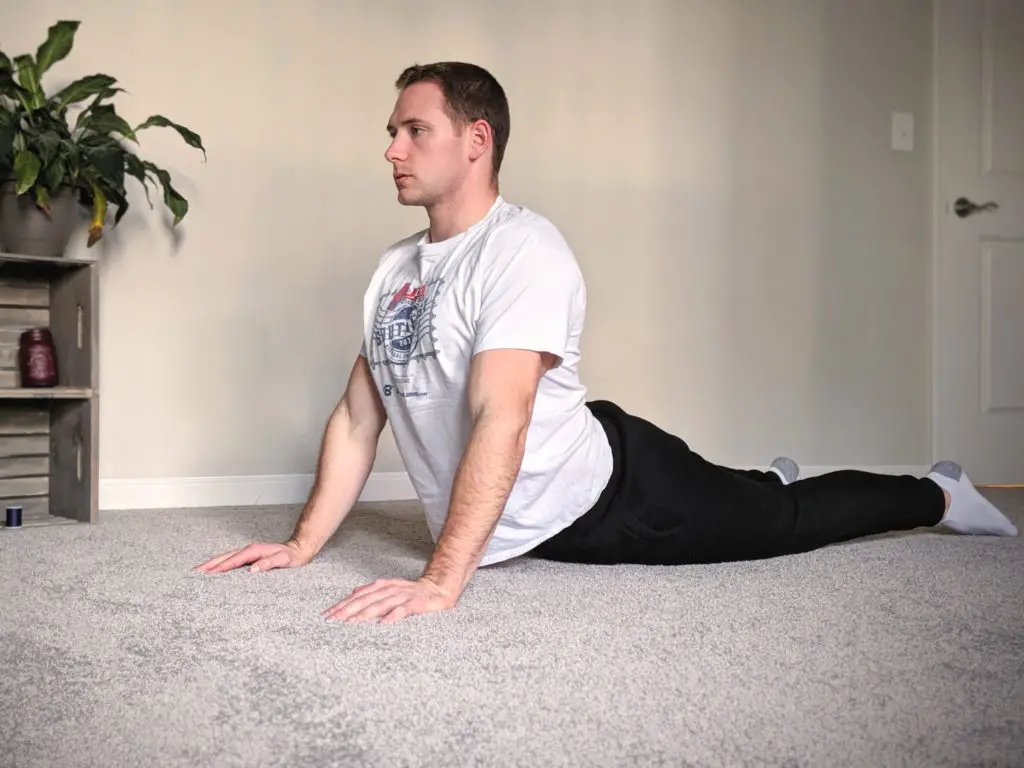
In the research, finding this one beneficial movement is called establishing a “directional preference.”
Like Bill, I feel better after repeated extensions; lumbar extension is my directional preference. Other repeated movements have no effect or increase my pain. But extensions loosen up my joints and alleviate my low back discomfort.
To read about how I overcame my years-long struggle with low back pain, check out My Story.
Can Repeated Movements Help Me?
Dealing with low back pain? Could finding a directional preference help you, too? Good news: if you have low back pain, there’s a 60-74% chance you have a directional preference (2,3).
In my experience, patients who benefit from a specific repeated movement share similar characteristics.
Here are 3 of the best low back directional preference exercises:
Repeated Extensions
Lumbar extension (backward bending) is the most common directional preference. By far. It accounts for a whopping 83% of directional preferences (2).
Logically, most physical therapists start here when assessing a patient for directional preference. The patient completes 10-15 repetitions of lumbar extension. Afterwards, baseline measurements are retested (e.g. pain, range of motion, walking) to see whether the extensions helped. If you see major improvements, bingo! That’s a directional preference.
These photos show Repeated Extensions in Lying, also known as Prone Press-Ups:
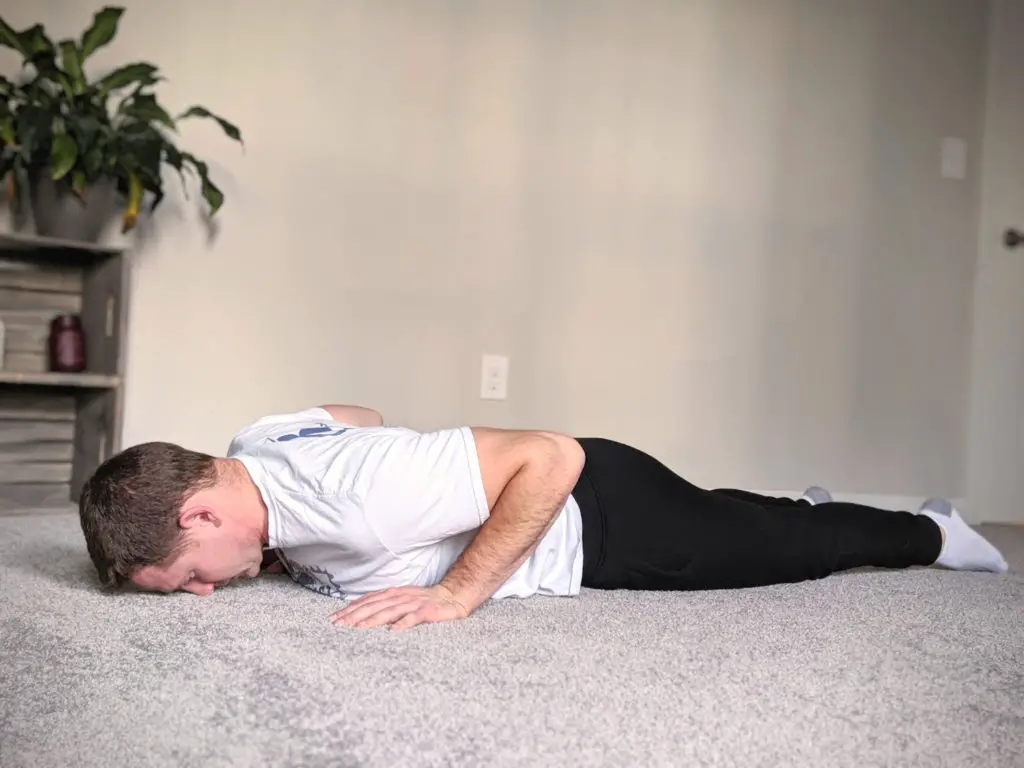
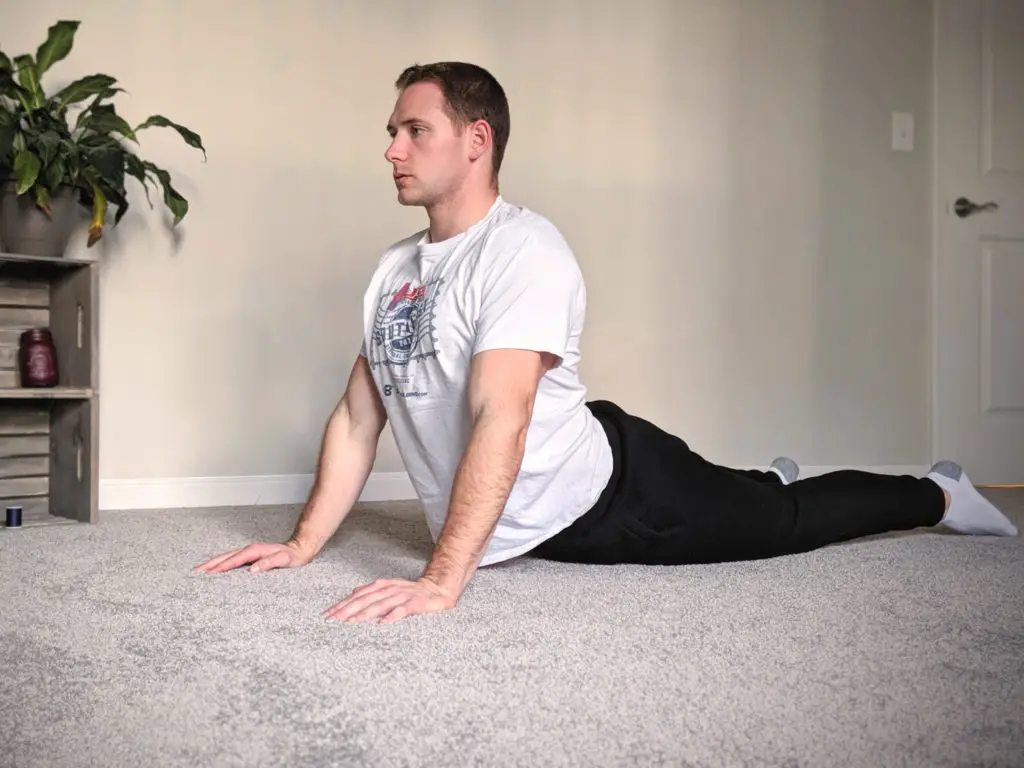
These clues tell me repeated extensions will help a patient: Sitting hurts. Driving hurts. Bending hurts. Lifting hurts. Painful positions and activities involve lumbar flexion (forward bending).
Standing and walking often relieve pain.
If sitting hurts your back, read 5 Ways to Sit With Less Pain.
Repeated Side Glides in Standing
This directional preference is more rare than extension, at just 10% (2). “Lateral responders” share these features:
First, they have low back pain on 1 side. The back pain may radiate into the hip or leg on the same side. Second, symptoms are equally bad with sitting, standing and walking. These poor patients struggle to get comfortable. Third, repeated extensions (described above) worsen their symptoms.
Patients struggle with proper technique on this exercise. Here are a few pointers:
- Perform to one side only. Stretching both ways is like crawling up the “down” escalator–tiring, frustrating and you won’t make much progress.
- Move the hips away from the side of pain. Then return to a neutral starting position.
- Keep the shoulders and hips perpendicular to the wall. Twisting the hips or torso changes the forces at the spine and may alter the results.

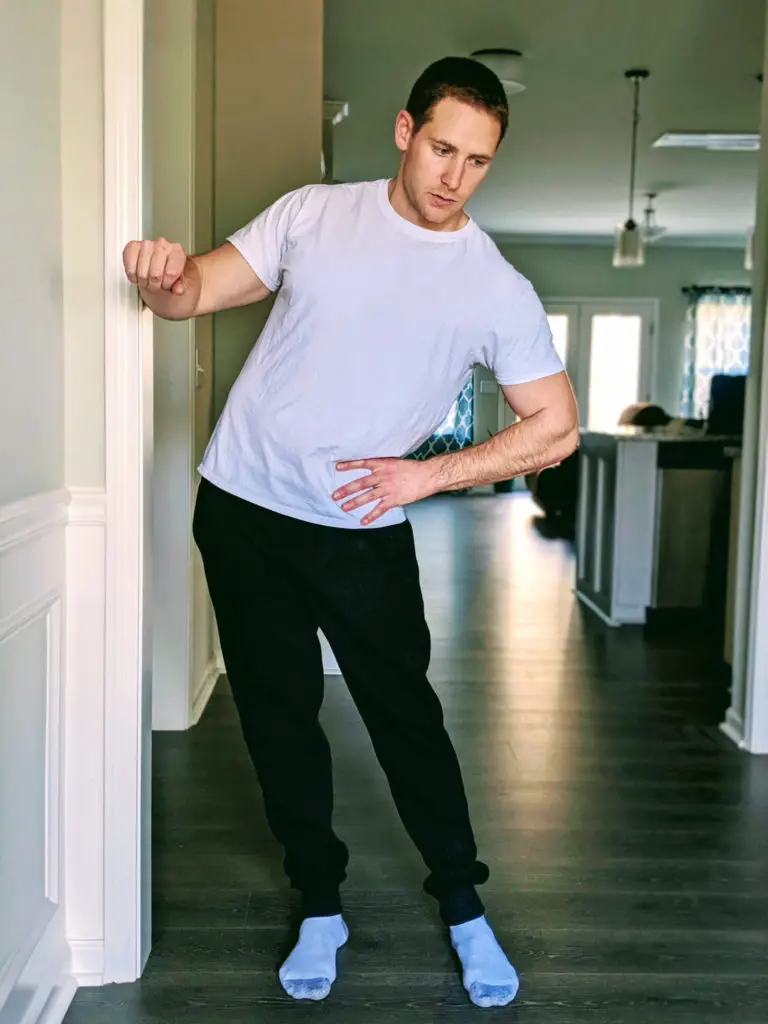
Q: Which side is the painful, based on the direction I’m stretching in the picture?
A: The left side; the hips move away from the side of pain
Repeated Flexion
Consider yourself elite if you’re a flexion responder; only 7% share this directional preference (2).
Flexion responders are typically older, though not always. Sitting relieves pain. Standing and walking aggravate symptoms. Walking uphill (more flexed) feels better than walking downhill (more extended).
These pictures illustrate Repeated Flexion in Lying, or the Double Knees to Chest exercise.

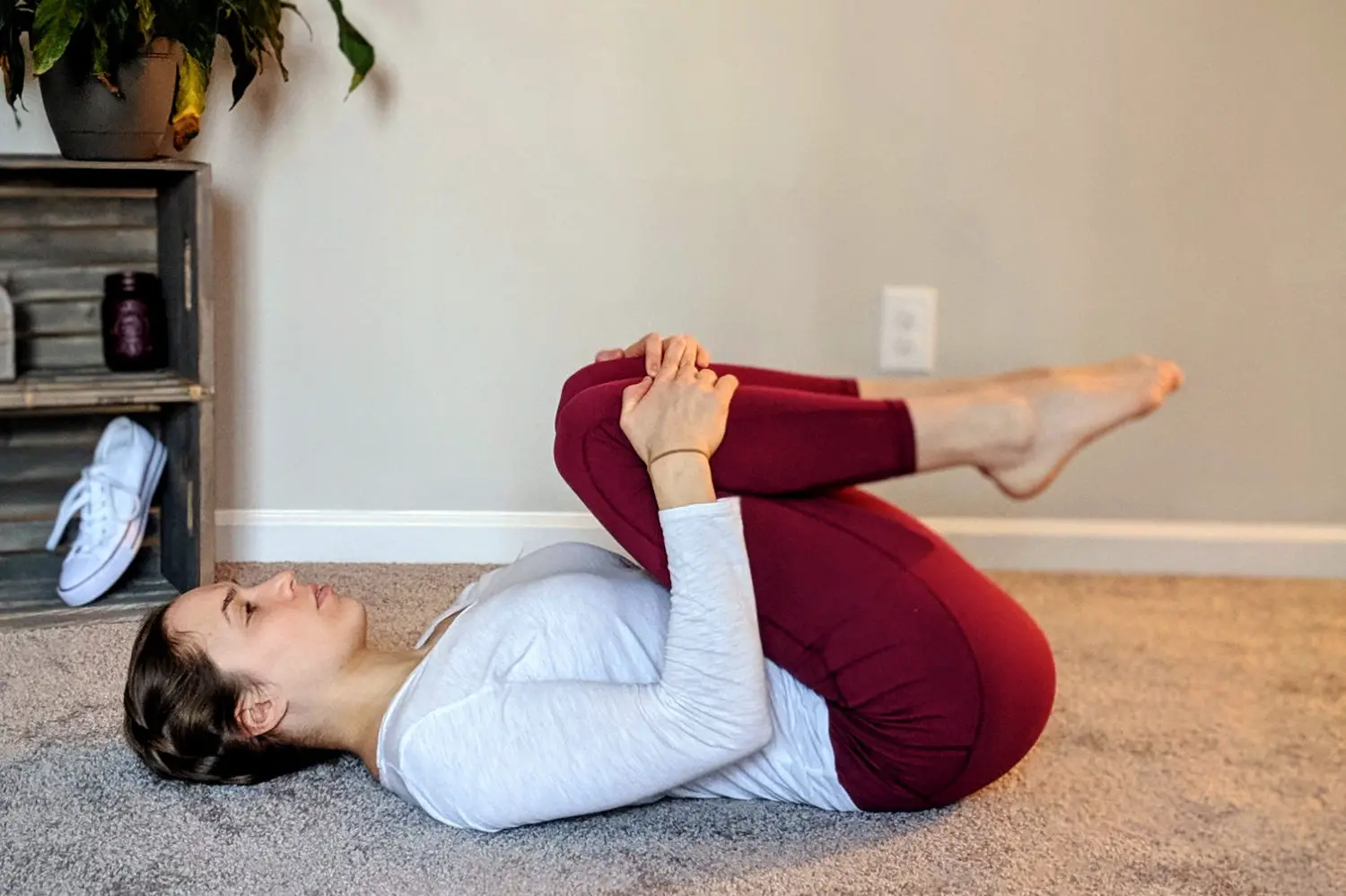
How Many Repetitions?
Once you’ve found a directional preference, repetitions matter. Patients who perform at least 3-6 sets of 10-15 reps per day tend to improve the quickest.
If you need a caffeine boost to get through the morning, a teaspoon of coffee won’t get the job done. Doing 1 set of 5 repetitions for the day is kinda like that tiny sip of coffee; the dosage is too low.
A Final Note
If you have back pain radiating into your hip, butt or leg, changes in pain location are important. The pain moving towards your spine is a positive sign. The back is becoming less irritated.
If the pain moves further down your leg (away from the spine), this indicates more irritation (3). Just like pain intensity and range of motion, changes in pain location indicate whether the selected repeated movement is effective.
More Resources
To learn more about how to use this powerful treatment system, check out Treat Your Own Back. It’s an amazing, accessible book that helped me take control of my low back pain.

To make a smooth recovery from low back pain, it’s crucial to avoid these 5 common mistakes along the way.
Readers: Have you tried repeated movements for low back pain? Did it help? Share your experience in the comments.
For more proven pain relief tips, join the free, fast-growing Facts & Physio Newsletter. Plus, get The Recovery Checklist when you sign up.
*Client details changed for privacy

